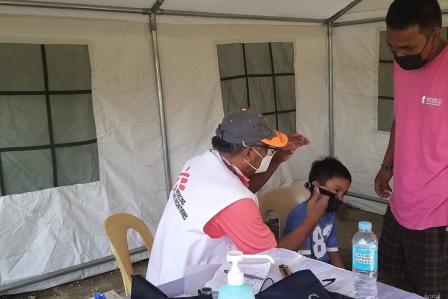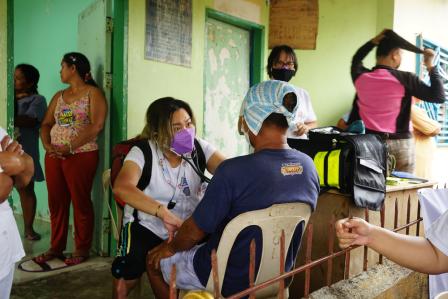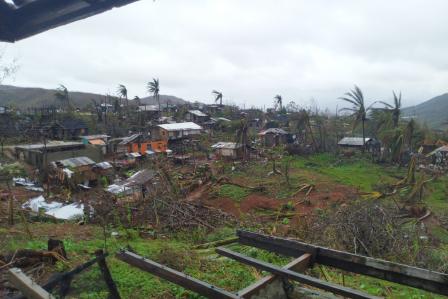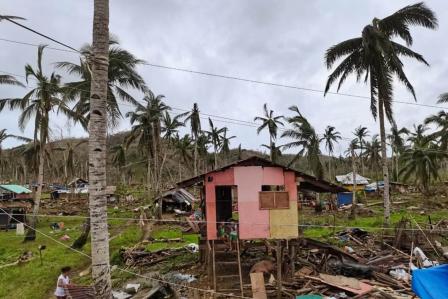MSF responds after typhoons Goni and Ulysses cause widespread destruction in the Philippines
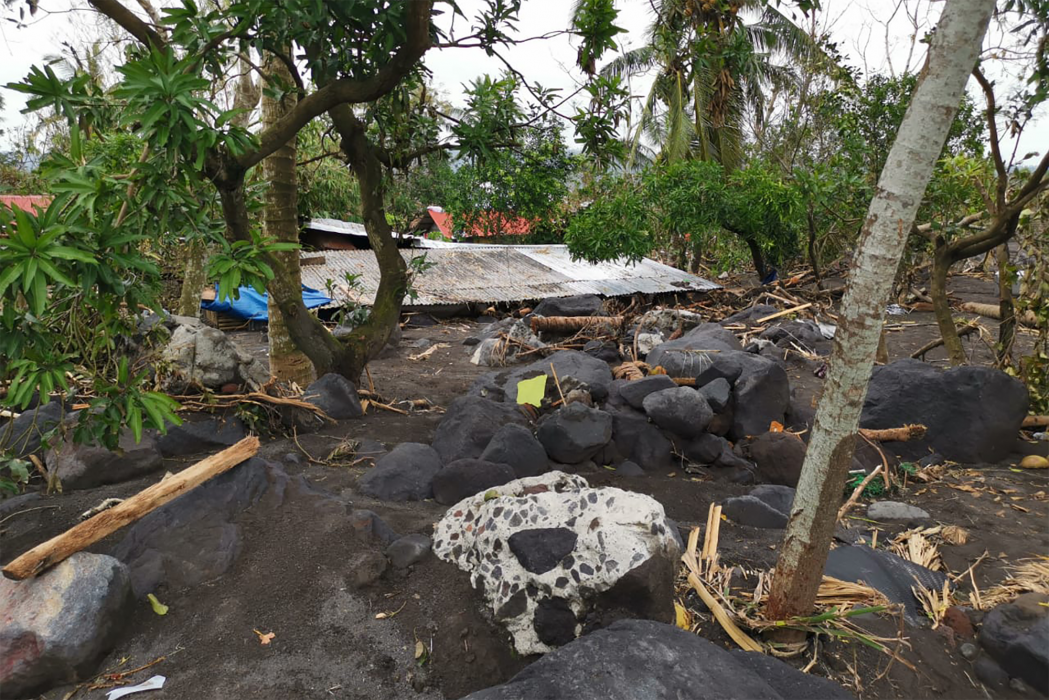
MSF teams saw substantial damage to houses, but very few deaths, from their first assessment of damages in Guinobatan, Albay Province, following landfall of typhoons Goni and Ulysses. © MSF
On 1 November, one of the strongest typhoons in 2020 struck the Philippines. Goni, or Rolly as it’s known in the Philippines, caused widespread damage throughout the Bicol region, particularly Catanduanes and Albay provinces, around 300 km south-east of Manila. Just before it made landfall, Goni was rated as a category 5 typhoon, the most severe level.
Three weeks later, large areas of Albay and Catanduanes are still without electricity, while cellular coverage and internet connection both remain unreliable. In the wake of damage wrought by typhoon Goni, MSF assessment teams were dispatched to each province.
However, both teams soon met a new challenge, as typhoon Ulysses made landfall on 11 and 12 November, suspending the assessment and MSF’s response. “Our teams had to stop working and wait for Ulysses to pass. It ultimately affected areas north of Manila the most,” says Jean-Luc Anglade, MSF head of mission in the Philippines.
The degree of damage to buildings and infrastructure in Albay province varies substantially. Towns on the slopes of the central Mayon volcano, facing the Pacific Ocean, where typhoon Goni made landfall when it was strongest, were immediately impacted. Low-lying towns were then destroyed by flooding rivers and violent mudslides, locally known as lahars.
“We first visited Guinobatan town, where the typhoons had caused violent lahars. It was the first time in living memory for locals that the San Francisco and Travesia villages had been struck by lahars. While surveying the area and walking over large boulders we were told that there used to be a house where we were standing. That was quite upsetting,” says Dr. Rey Anicete, the MSF emergency team leader in Albay.
While destruction could be seen in most of the towns in Albay, pre-emptive evacuations helped to minimize the loss of lives as a whole. Most of the people who had to flee have since been able to return to their homes and have started repairing the damage.
Two evacuation centres currently house 1,037 evacuees who might need to stay longer due to the level of destruction in their communities and homes. In Guinobatan town, houses and buildings in the San Francisco and Travesia villages were buried in mud and residents forced to evacuate. Tiwi town was directly hit by typhoon Goni. All its districts faced strong winds and rains, and storm surges in coastal areas. More than a third of all houses are destroyed and almost 200 families are still staying at the Joroan National High School evacuation centre.

MSF teams conducted outreach activities and health assessments in San Miguel island, Catanduanes Province, Philippines, following landfall of typhoons Goni and Ulysses. © Hana Badando/MSF
The MSF teams have now started distributing jerry cans for storing drinking water and COVID-19 prevention kits, which include two washable face masks, hand sanitiser and one face shield per person, at both two evacuation centres. Training on infection prevention and control (IPC) around COVID-19, together with donations of personal protective equipment (PPE) for the staff in the evacuation centres is planned.
“COVID-19 has been severely affecting the lives of people in the Philippines since March, and in an evacuation centre, it’s especially important to maintain hygiene and social distancing measures to prevent outbreaks. Health staff and evacuees have a significant role to play in achieving IPC goals,” says Allen Borja, an MSF IPC nurse in Albay.
In Catanduanes, an island province, six of its 11 municipalities were severely damaged when typhoon Goni swept through it. The island suffered the most in terms of destruction and loss of livelihood. Fortunately, people in this province were able to leave the evacuation centres quickly to return to their houses and begin repairing them.
“The MSF team launched its response on 24 November in San Miguel, one of the four municipalities considered in the response. Together with Municipal Health Offices health workers, one MSF doctor and one nurse provided medical supplies for outreach activities in the most affected villages. The team started the distribution of and aqua tabs for water purification and jerry cans to store drinking water for around 2500 families,” says Dr. Hana Badando, emergency team leader in Virac, Catanduanes.

